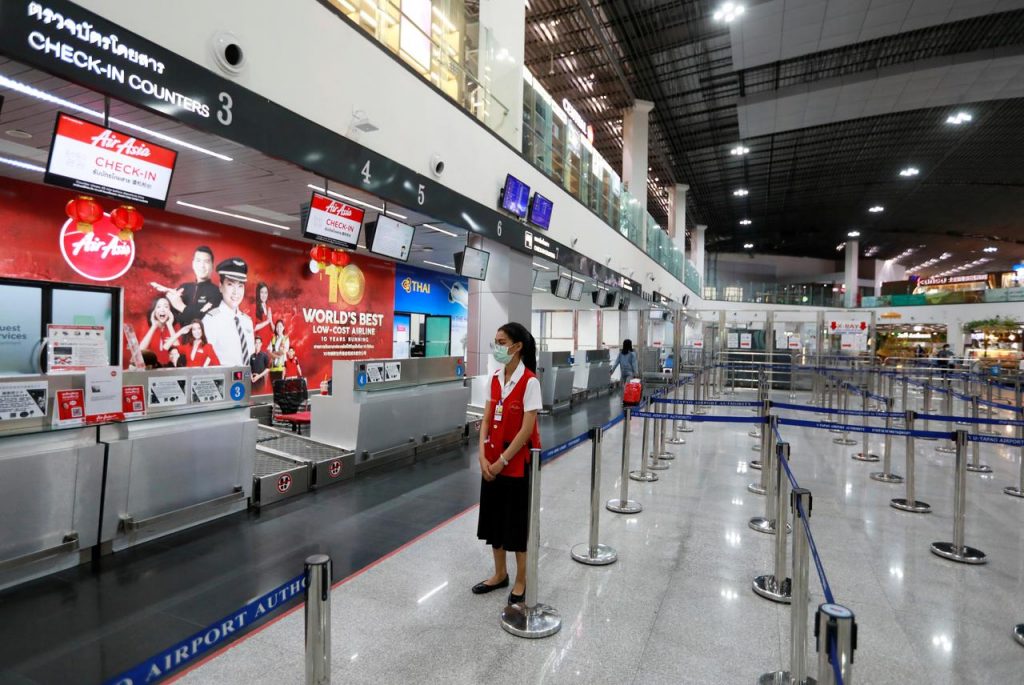
- ARAB NEWS
- 09 Jul 2025

When multilateral organizations produce economic reports, they generally adorn the front cover with a generic and emotionless photo of an urban center, a thriving factory, or smiling children. A recent report by the Paris-based Organization for Economic Cooperation and Development (OECD) was different. The multilateral development body that focuses on the world’s most advanced economies displayed a photo that was subtle, but shocking: A hauntingly empty airport terminal.
When we think of airports, we think of bustling terminals packed with passengers, bright lights and movement. After all, some 4.6 billion passengers take to the air each year worldwide — about 12.5 million per day. So the message conveyed by the photo was clear: The world could be headed for serious trouble with the rapid rise of what many leading scientists are calling an inevitable global coronavirus pandemic. An empty airport terminal is simply one symptom of a much larger problem.
The OECD has already revised downward its global growth forecast for 2020 to 2.4 percent from 2.9 percent. The organization noted, however, that growth could be hit harder if the epidemic spreads to many other countries. At that stage, the world could see a paltry 1.5 percent growth, according to the OECD.
Much of the global slowdown is due to the Chinese slowdown. After all, China accounts for about 40 percent of global commodities demand, nearly 10 percent of international tourism, 11 percent of world trade, and 17 percent of global gross domestic product, according to the OECD.
So what effects might the virus have on the Middle East and North Africa (MENA)? The effects will be sharp and immediate on several regional economies, though the lingering pain will largely depend on whether or not the virus is contained.
The coronavirus landed at a time when MENA countries were already struggling with low growth prospects for 2020.
Afshin Molavi
Iran is on the front lines of the virus, the hardest-hit country in the MENA region. More than 2,300 cases of the coronavirus have been confirmed, with more than 70 deaths, according to government figures. Independent experts, however, suggest that the infection toll could be much higher. A team of epidemiologists at the University of Toronto suggested that Iran may actually have seen some 18,000 cases, and rising, and BBC Persian has estimated more than 200 deaths thus far, based on hospital logs.
Though each death is a tragedy, on a more macro level, Iran’s economy can hardly handle such a punch in the gut right now, amid increasing isolation owing to US sanctions and chronic mismanagement and corruption. According to the International Monetary Fund, Iran’s economy contracted by 9 percent in 2019, making the Islamic Republic one of the worst-performing economies in the world. The only two that did worse in 2019? Libya and Venezuela.
A World Health Organization team has landed on the ground this week and Iranian officials have launched an aggressive campaign of disinfections and medical team home visits. However, even if Iran is able to stem the virus, its economy will certainly receive more body blows from the global fallout of coronavirus.
Though Iran’s case is the most severe in the MENA region, it is certainly not alone. Oil prices could take a further battering if China’s economy continues to sputter and if the virus strikes even harder at East Asian economies. Most Gulf Cooperation Council countries have a heavy exposure to Chinese and broad Asian oil or gas demand.
China, South Korea and Japan all face varying degrees of economic slowdown resulting from coronavirus. As these economies continue to feel the pain, oil and gas demand will pinch. Even if Russia and OPEC revise their tag-team production cuts to boost markets, underlying demand will remain weak until Asia’s global supply chains are back to normal. After all, the vast majority of MENA oil goes east, not west.
As for the West, several North African countries are closely linked to European trade, supply chains, and tourism. As China slows, so does Europe. As Europe slows, North African states — many of whose exports and tourism industries are heavily reliant on European markets — will be hit hard.
Major international air hubs like Dubai or Istanbul and regional carriers with global links will be hit by slowing air travel growth, though the airlines will benefit from lower oil prices.
What’s more, the coronavirus landed at a time when MENA countries were already struggling with low growth prospects for 2020. With youth unemployment still hovering at 30 percent, the region’s populous states, from Egypt to Algeria and Iraq to Sudan, will face continued pressure from frustrated populations.
While virus watchers tend to chronicle the number of confirmed cases of infection or death in the MENA region and worldwide, it is important to remember the other victims of the virus: The tens of millions of people across the region — and the billions worldwide — who will be hit hard by the coming economic slowdown.
Afshin Molavi is a senior fellow at the Foreign Policy Institute of the Johns Hopkins University School of Advanced International Studies, and editor and founder of the New Silk Road Monitor. Twitter: @afshinmolavi